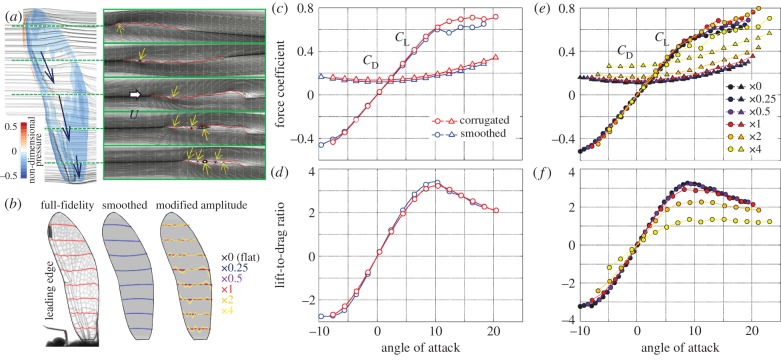Figure 2.
The effect of wing corrugation on the gliding aerodynamics of a dragonfly forewing at Re = 730 [33]. The simulations are performed with a local forewing grid (301×321×21) and a larger global grid (301×321×21; 15 times mean chord length to the outer boundary). The non-dimensional time step is set to be 0.01. (a) Three-dimensional and two-dimensional streamlines around the forewing of Sympetrum sanguineum. The vortices in the valley highlighted by yellow arrows help to form a smooth envelope. (b) Selected cross sections of the full-fidelity wing, smoothed wing and the wings with modified amplitude. (c) Coefficients of lift and drag and (d) the lift-to-drag ratio for the full-fidelity and smoothed wing models (angle of attack is defined relative to the zero-lift angle). The coefficients are obtained after convergence of the lift and drag (at least 10 convective time steps) to exclude transient effects. (e,f) Aerodynamic performance of the exaggerated and reduced corrugation models.

